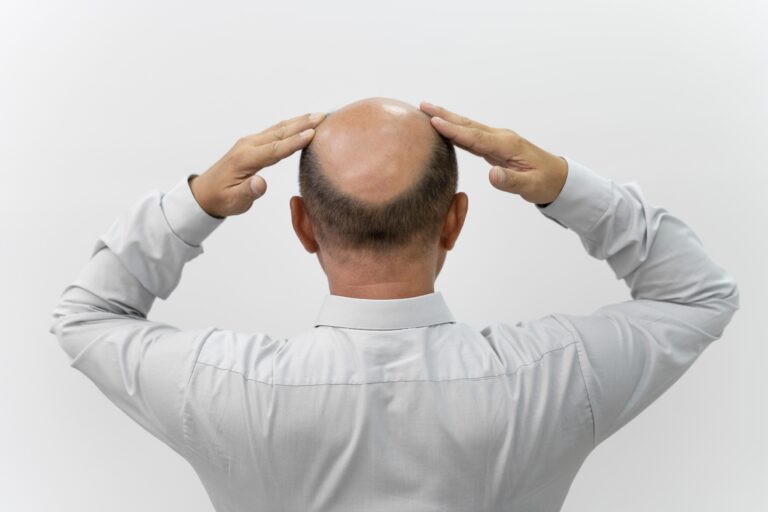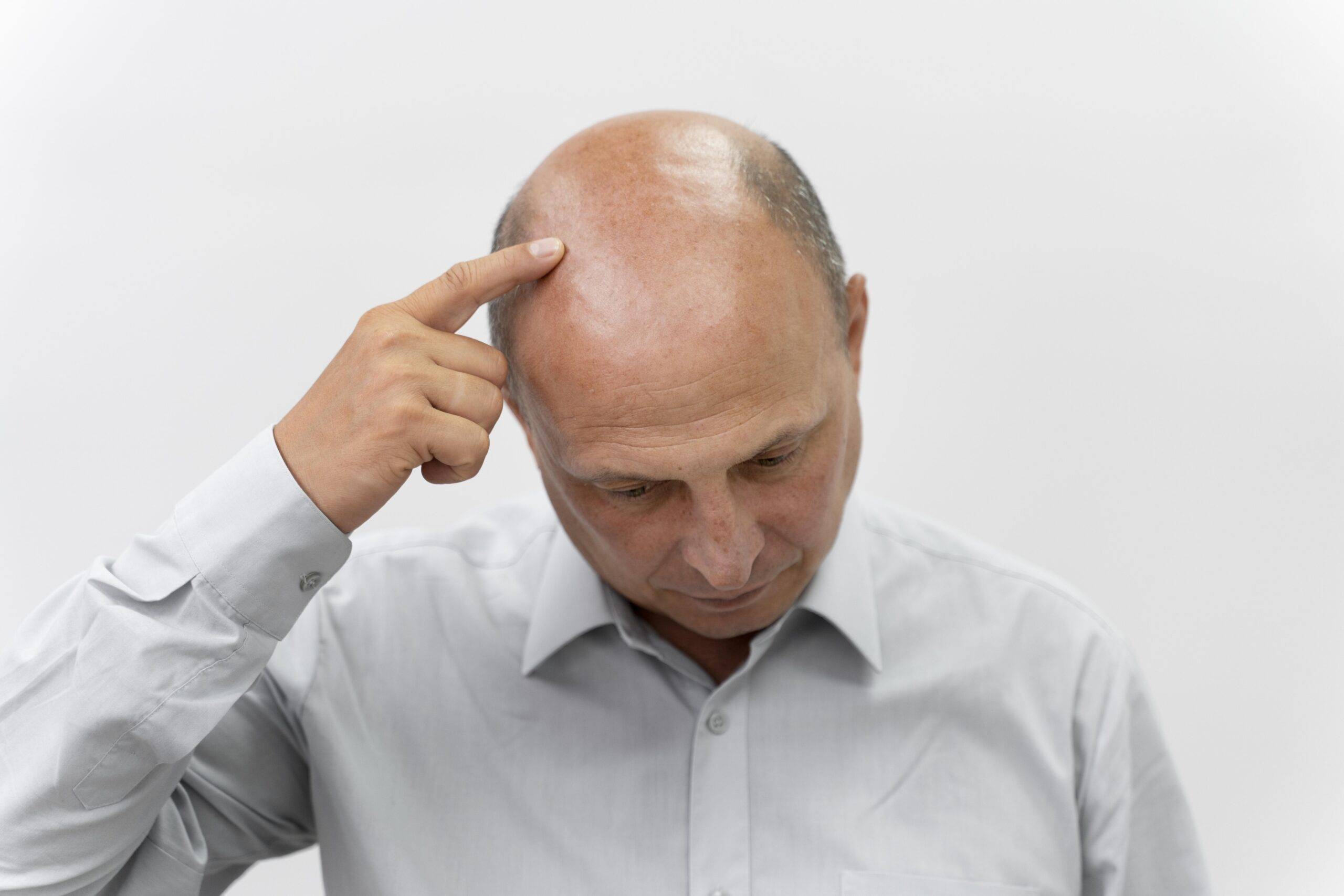Alopecia, commonly referred to as hair loss, affects millions of people worldwide. While losing a few strands of hair daily is normal, excessive hair shedding or bald patches can be a sign of alopecia. This condition not only impacts one’s physical appearance but can also take a toll on self-esteem. Understanding alopecia, its causes, types, and treatments, can help manage and potentially reverse its effects.
What Is Alopecia?
Hair loss on the scalp and other areas of the body is a symptom of this disease. Genetics, autoimmune reactions, illnesses, and lifestyle choices can all contribute to either temporary or permanent hair loss. It can happen at any age and affects both men and women.
Common Causes of Alopecia

1. Genetics
The most prevalent cause of baldness and hair thinning is androgenetic alopecia, or hereditary hair loss. It is common for this illness to run in families.
2. Autoimmune Disorders:
Hair follicles are mistakenly attacked by the immune system in conditions like alopecia areata, which results in patches of hair loss.
3. Hormonal Changes:
Temporary hair loss can result from hormonal imbalances caused by pregnancy, menopause, and thyroid conditions.
4. Stress and Trauma:
Telogen effluvium is a transient type of hair loss that can be brought on by high levels of stress or traumatic experiences.
5. Nutritional Deficiencies:
Hair follicle weakness brought on by a lack of vital nutrients, such as vitamins, iron, and zinc, can result in hair loss.
6. Medical Conditions:
It can be brought on by conditions like diabetes, lupus, and scalp infections.
7. Medications and Treatments:
Chemotherapy and radiation therapy are two medications that can cause hair loss.
Types of Alopecia
1. Androgenetic Alopecia:
Also known as male or female pattern baldness, this type is characterized by a receding hairline or thinning at the crown.
2. Alopecia Areata:
Patchy hair loss on the face, scalp, or other areas of the body due to an autoimmune disease.
3. Alopecia Totalis:
Complete loss of hair on the scalp.
4. Alopecia Universalis:
Loss of all body hair, including eyebrows and eyelashes.
5. Telogen Effluvium:
Temporary hair loss caused by stress, illness, or hormonal changes, resulting in widespread thinning.
6. Traction Alopecia:
Undue strain on hair follicles, which is frequently brought on by tight hairstyles like ponytails or braids, results in hair loss.
Symptoms of Alopecia

Sudden clumps of hair falling out
Gradual thinning on the top of the head
Circular or patchy bald spots
Full-body hair loss in severe cases
Excessive hair shedding during washing or brushing
Diagnosing Alopecia
If you suspect alopecia, it’s essential to consult a dermatologist. Diagnosis typically involves:
1. Physical Examination:
Examining the hair patterns and scalp.
2. Medical History:
Understanding family history and potential triggers.
3. Scalp Biopsy:
Analyzing a scalp tissue sample in order to find underlying issues.
4. Blood Tests:
Detecting nutritional deficiencies or hormonal imbalances.
Treatment Options for Alopecia

1. Medications:
- A topical medication called minoxidil promotes hair growth.
- An oral drug called finasteride is used to treat androgenetic alopecia.
- In situations of alopecia areata, corticosteroids are used to inhibit the immune system and reduce inflammation.
2. Lifestyle Changes:
- Keep up a healthy, vitamin-and mineral-rich diet.
- Reduce stress by practicing yoga, mindfulness, or therapy.
- Steer clear of haircuts that tug at the hair.
3. Hair Restoration Techniques:
- Hair transplant surgery involves moving hair from one area of the scalp to areas where there is baldness.
- The process of tattooing the scalp to resemble hair is known as scalp micropigmentation.
4. Alternative Therapies:
- In order to encourage hair growth, concentrated platelets are injected into the scalp as part of platelet-rich plasma (PRP) therapy.
- Natural Remedies: Hair follicles are thought to be strengthened by oils like castor and rosemary.
5. Wigs and Hairpieces:
- High-quality wigs can be an excellent option for those experiencing severe hair loss.
Preventing Alopecia
Even if not all types of this disease may be avoided, you can lower your risk by doing the following:
- Stay away from very hot style and harsh chemical treatments.
- Make use of mild shampoos and conditioners without sulfates.
- Use sunscreen or a hat to shield your scalp from UV radiation.
- Treat long-term illnesses and use prescription drugs as directed.
- To increase blood circulation, massage your scalp on a regular basis.
Coping with Alopecia
Living with this disease can be challenging, but there are ways to maintain confidence and mental well-being:
- Join support groups or make connections with people going through similar things.
- Take care of yourself and concentrate on your strengths.
- Try wearing scarves, caps, or makeup to make yourself look better.
Conclusion
Alopecia is a complicated disorder with a wide range of causes and symptoms. Effective management of the ailment can be achieved by investigating accessible remedies and comprehending its underlying causes. Although lifestyle modifications and medical procedures might encourage hair growth, accepting your individual beauty and getting support are just as crucial. To find the best course of action for your requirements, speak with a healthcare practitioner if you’re having trouble with hair loss.






